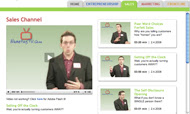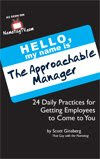So, less than an hour ago, I went straight from the ABC studio to the Starbucks across the street and they’ve already got the footage online!
I heart technology.
We had a blast. Watch the clip here.
See ya at Bagels & Brainstorming at noon today!
LET ME ASK YA THIS…
How will you recession-proof your career?
LET ME SUGGEST THIS…
For the list called, “24 Ways to Out GROW Your Competition,” send an email to me, and I’ll send you the list for free!
* * * *
Scott Ginsberg
That Guy with the Nametag
Author, Speaker, Coach, Entrepreneur
[email protected]
 The world’s FIRST two-in-one, flip-flop book!
The world’s FIRST two-in-one, flip-flop book!
Buy Scott’s comprehensive marketing guidebook on Amazon.com and learn how to GET noticed, GET remembered and GET business!















